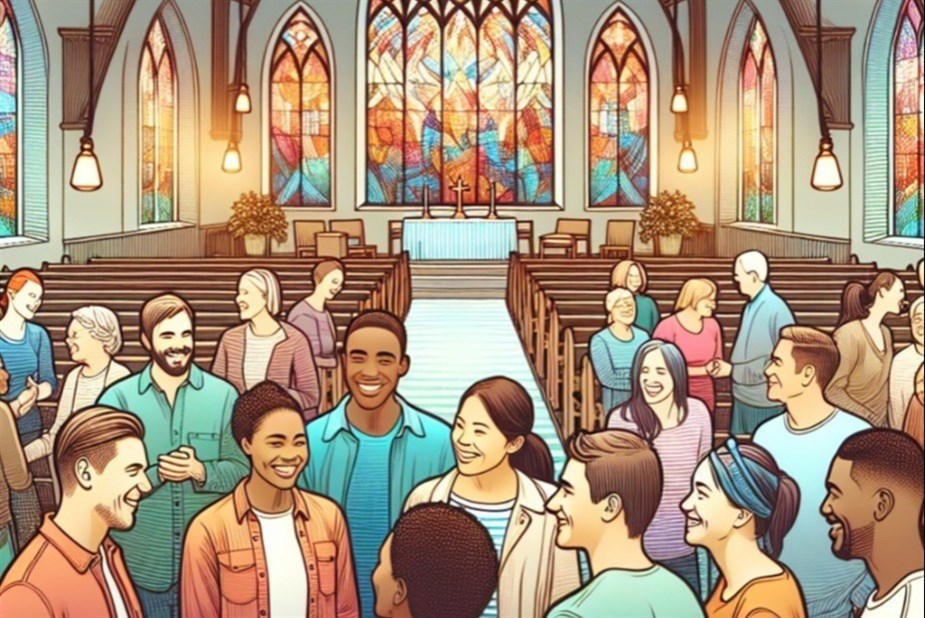
Author - Jorj Kowszun
Recently, I ran a training session for welcomers at my church. I didn’t call it a training event, rather it was a “Welcomer’s Tea”, with some excellent cakes to go with tea or coffee. We were very lucky to have good quality input from someone with considerable experience of the quality of welcoming in different churches. There were sixteen people present from the welcoming team and for many of them there were some significant surprises.
Welcoming can appear, at first sight, to be essentially about saying “Hello” to people as they enter the church for worship and this is indeed a key part of the role. The warmth and sincerity of that “Hello” can have a significant impact on people, not just new people, but existing members as well. However, it does not end at the threshold to the place of worship. For new people there’s giving information like where the toilets are, what’s available for children and where to take them as well as some indication of what to expect in the service. There’s also helping them to find a seat and introducing them to a regular member that you know will be friendly towards them. People with disabilities may need help, although it’s important to determine just how much they do or don’t want.
In my own church one of the welcome team sits at the back of the church during the service keeping an eye out for late arrivals, but also looking out for people who leave early, making sure they are OK. Sometimes a person who leaves during the service might welcome someone to talk to. A recently bereaved person, for example. At the end of the service we usually serve refreshments and welcomers are expected to seek out any new people they spoke to on the way in and check that everything went well, making sure they are being looked after and not left on their own.
This was all seen as reasonable at the training event and reinforced when we asked people to give examples of particularly good welcoming experiences they had in the past in our church or others. I couldn’t resist telling the story of the time my wife and I were on holiday and attended one of those “famous” churches. On the way in all we got was a nod and when we sat in a pew no-one spoke to us. This particular service broke half way through to have a social time with refreshments. My wife and I agreed that we would not make an effort to speak to anyone to see if we would be approached. We were disappointed to find that no-one did. After a while I spotted a woman standing alone out of the group and thinking that if the usual members weren’t going to speak to her I would. As I approached her she said, “Please don’t speak to me. I am praying for the social time.” Perhaps they spotted us as tourists and weren’t going to waste their energy on us!
I mentioned earlier that there were some significant surprises in the training session and these came when we talked about what welcomers’ roles where when not on duty. In the social time after the service it is important to ensure that new people particularly, but also regular members, are not left out, standing alone with no-one taking an interest in them. I spoke about the welcomers’ discipline of noticing (adapted from educator John Mason), which is about keeping an eye out for anyone who looks out-of-it. It was pointed out that surely members of the congregation would naturally notice people who were not being engaged by others and seek to involve them in conversation or introduce them to other people. If only that were true. While we have a rhetoric of being a congregation that looks out for each other that is, honestly, aspirational rather than the reality. The social time tends to be when people chat with friends, deal with church issues and try to catch the vicar. The welcomers, I said, were the last line of defence and part of their ministry is befriending members of the congregation, new or not, who would otherwise be left alone.
For some this felt like an endless responsibility, that they would always be on duty. Others pointed out that there were lots of welcomers and the task of welcoming is one that should be shared between them. So long as everyone practiced the discipline of noticing, which is just about awareness of what is going on in the room, then someone on the team would take action. There could even be a rota of “noticers” additional to those on duty.
Welcoming, done well, is a vital ministry that can have a significant impact on the congregation. It is so important that I suggest it needs a “badge” conferred by the diocese in the way pastoral and other ministries are recognised.

Jorj Kowszun is a Reader at St John's, Meads, Eastbourne